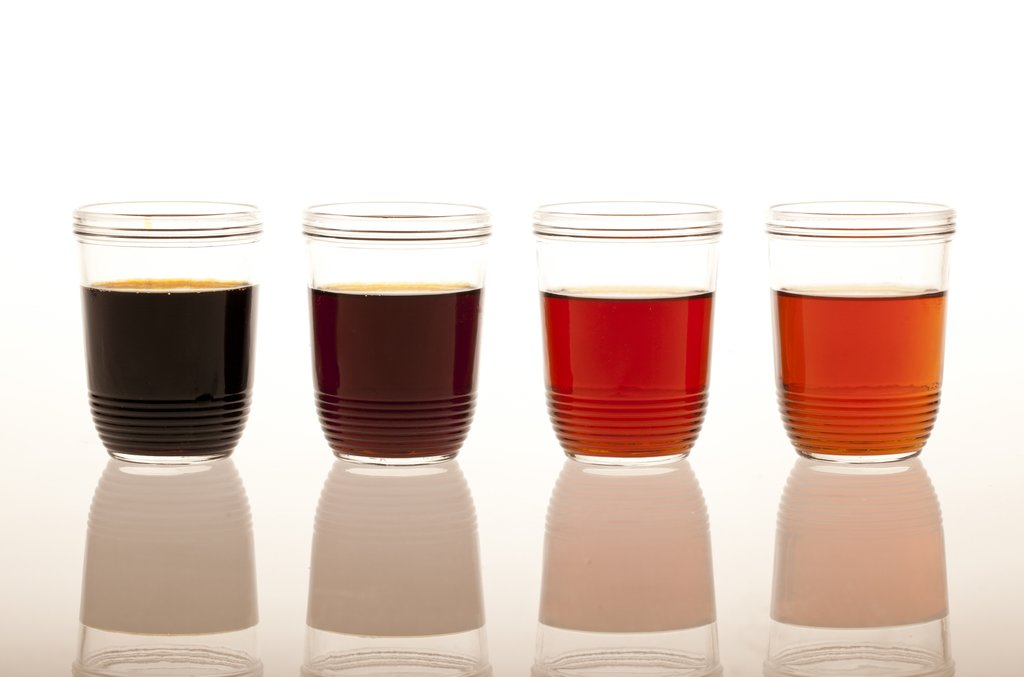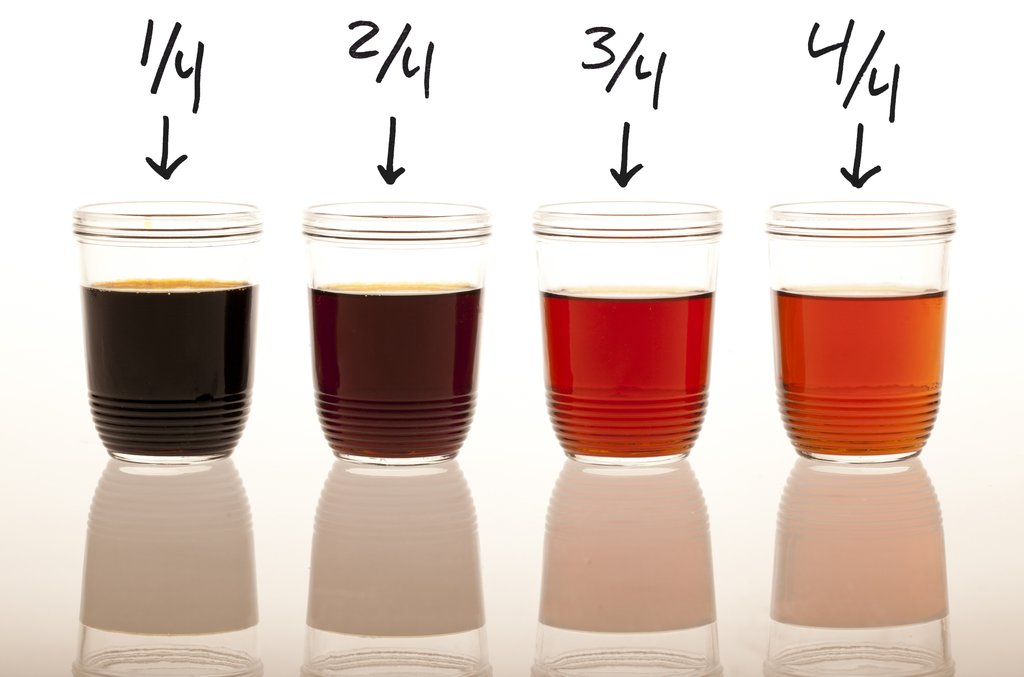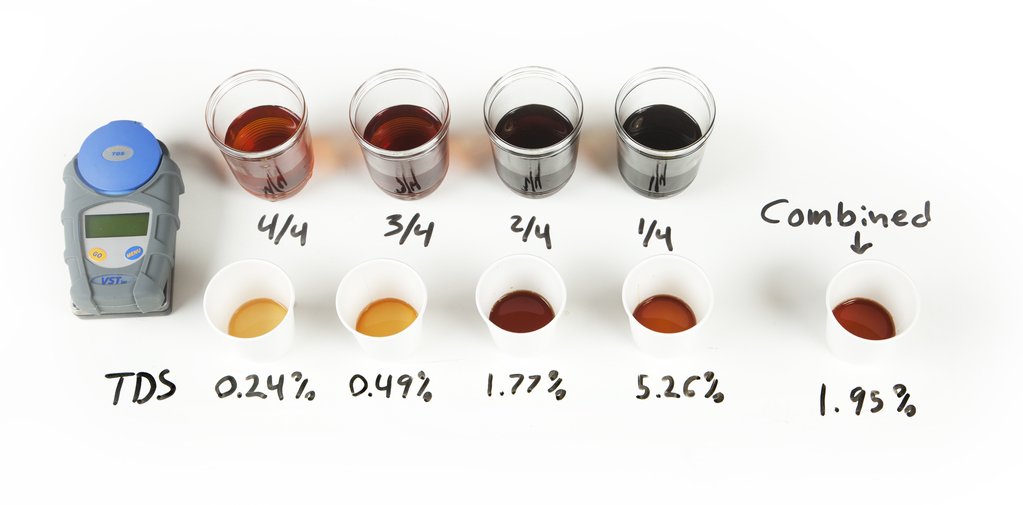

Ever been tempted to pour off a little cold brew before it has finished brewing?
Desperate for a caffeine fix, we've done it. The result was an overpoweringly strong brew. Nothing like the smooth, sweet brew we're accustomed to. In this post, we'll take a closer look at the various stages of extraction and do a little taste testing while we're at it.
You may have noticed that those first initial drips into the carafe are super dark while the last few drips are much lighter in color and more transparent. The rate of extraction is not constant. Looking at the picture above, it doesn't even appear to be a linear process. It looks like the bulk of extraction has taken place during the initial parts of the brew based on how dark and opaque the first sample is compared to the next sample.
This sort of non-linear extraction is expected. In "Everything but Espresso" Scott Rao explains that coffee extraction occurs in two stages. In the first stage, water contacts the grounds and quickly washes away most of the exposed solids on the surface of the coffee grounds. The second stage occurs much slower and involves the bean fibers absorbing water. Over time, the dissolved solids migrate out to the surface to be washed away.
Setup
We set things up using our standard cold brew recipe:
- 675ml of ice/water in the tower
- 25ml pre-wet on the coffee bed
- 60g of Temple's Ethiopia Boke Natural Espresso (medium grind)
- 1 drip/second initial drip rate for about a 6 hour brew
- We decided we'd divide up the batch into 4 separate samples, so I marked a line on the carafe indicating 150ml (the coffee absorbs about 100ml). Once the cold brew reached that line, we'd pour off that sample to keep them all separate. This short time-lapse shows the process.


Taste
In order to not completely overwhelm my taste buds, I tasted the least extracted stage first. That's the one on the right shown in the picture above marked 4/4. This sample was the 4th quarter ( and last) stage of the brew. I then sampled the third stage of the brew and so on...
- 4/4 stage. Very watery and tea-like.
- 3/4 stage. Water/tea-like taste similar to the first, with just a fleeting taste that it's cold brew you're drinking. Tanic.
- 2/4 stage. The raspberry, chocolate and lemon flavours we're accustomed to with this coffee come through, but falls off quickly. Watery and weak finish.
- 1/4 stage. Intense, syrupy, overpowering.
I filtered about 10ml of each sample into separate cups and then measured the percentage of total dissolved solids (TDS) of each. For reference, our target brew strength is typically about 2% TDS. I began measuring the last stage and least extracted sample first. By the third sample (the second stage of the brew) it was clear that the trend was not going to be linear. I was expecting the first stage of the brew to have a much higher TDS, but it was out or range of my refractometer (measures 0.00%-5.00%). To try to get it in range and estimate the original % TDS, I diluted it with 1 part distilled water. This brought it down to 2.63%, so I estimate the original was about 5.26%.


To get an idea of what the average TDS of the brew would have been had I not separated the samples, I mixed equal amounts of each sample and measured the % TDS to be 1.95%. Very close to our target of 2%.
Like all good experiments, this one's brought up more unanswered questions:
Could I brew a half batch in half the time and just dilute the concentrate with water?
Suppose I diluted that first stage to a brew strength of the combined average (1.95%). How would it taste? In other words, what flavors do the last stages of the brew contribute?
Could I brew with a finer grind over a shorter period of time and reduce the risk of over extraction?